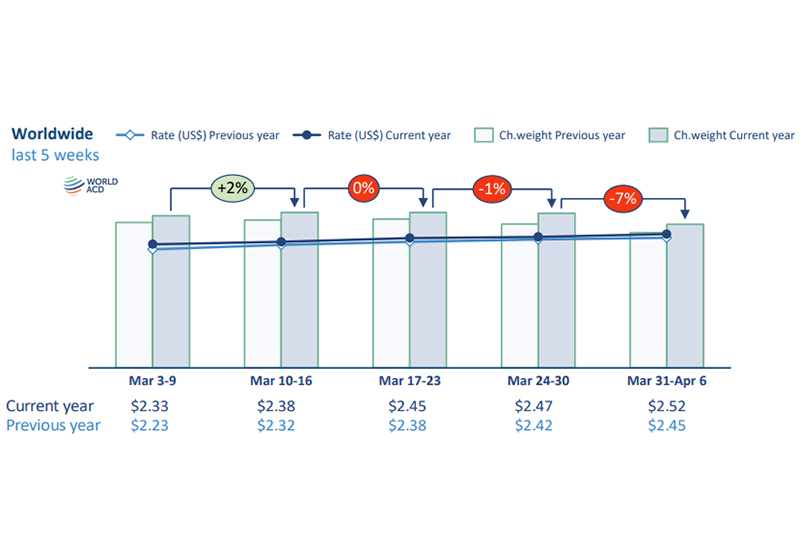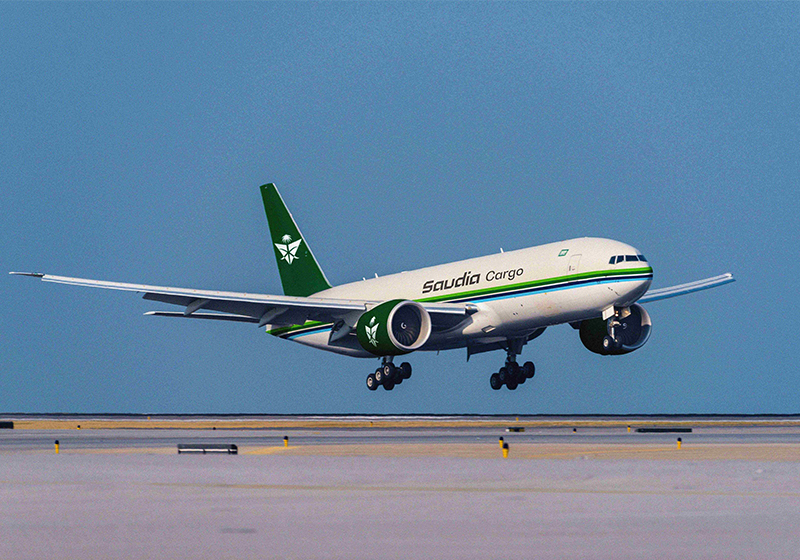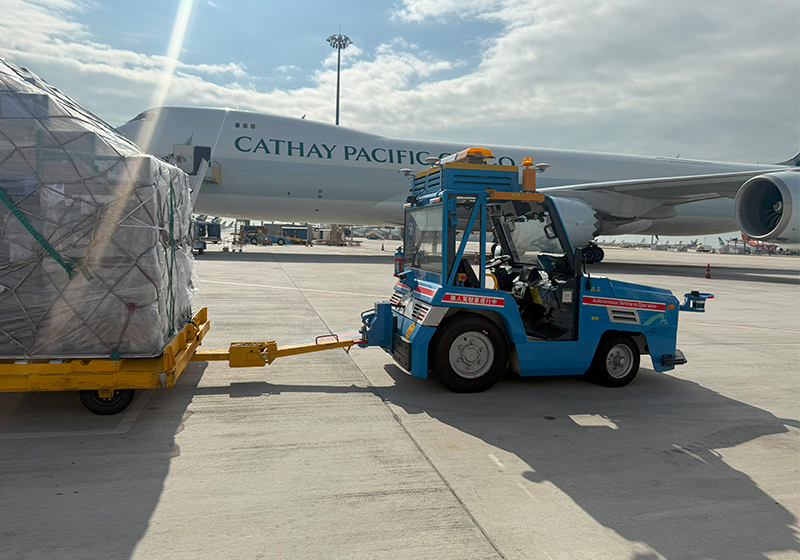The slowdown in global tonnage that began in the latter half of March accelerated in week 14 (March 31 - April 6), according to the latest weekly figures from WorldACD Market Data. Following a -1% decline the previous week, worldwide air cargo tonnages fell by -7%, week on week (WoW). About half of this was due to a seasonal drop in bookings during the Eid holidays at the end of Ramadan, while the other half reflects worldwide uncertainty over a trade war triggered by the latest wave of US tariffs and the removal of US de minimis exemptions for shipments from China and Hong Kong. Despite the weakening in demand, volumes are still at a +6% higher level than the same week last year.
Amidst this overall downturn in tonnages, worldwide average rates still hold firm and are even continuing their upward trend seen since the beginning of March, increasing by +2%, WoW, and by +3% based on the comparison of the last two weeks with the previous two weeks (2Wo2W). Compared with the same week last year (YoY), rates are +3% higher, in line with the trend of the last four weeks, based on the more than 500,000 weekly transactions covered by WorldACD’s data.
Demand ex-Asia Pacific to the US softens while rates continue to rise
The Lunar New Year holiday aside, week 14 shows a week-on-week drop in tonnages (-1%) ex-China and Hong Kong to the US for the first time since the beginning of the year, although volumes are still +3% higher than the same week last year. Flows from China and Hong Kong to Los Angeles show a more pronounced drop of -5%, WoW, now at par with the volumes 12 months ago. Other countries in the Asia Pacific region also saw a significant decline, especially ex-Japan and ex-Taiwan (both -7%, WoW).
Despite a weakening demand out of all origin regions, week on week, the average rate for each origin region has increased except for a -2% decline out of CSA. Pricing ex-Asia Pacific jumped +4%, WoW, with the average spot rate out of the region going up +5%, to $3.94. As the new US tariffs that have not been put on hold for 90 days came into effect on Wednesday, 9 April, the impact is expected to be more clearly visible on certain trade flows in next week's report.





